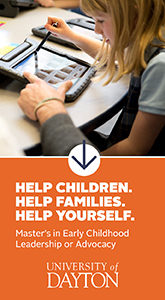Recognizing Differences at Age Two
Alison Gopnik, The Philosophical Baby
In Roots and Wings, Stacey York observes that from infancy on there is a "progression of children's awareness of and attitude toward human differences:"
"Older toddlers and young twos begin using words such as mine and me to describe themselves. They use the word you to describe all others. As their sense of self grows stronger, they go through a period of wanting to be independent and in control of themselves....They need to act on and prove their independence, and children who are not allowed to do things for themselves risk feeling shame. Children who are shamed or develop a shame-based personality may need to put down others in order to convince themselves that they are worthy and acceptable.
"Children at this age also begin to define themselves and others by physical characteristics such as skin color, hair color, and anatomy. They notice and are learning the names and locations of their body parts. They can classify people by gender. Two-year-olds are learning the names of colors, and they can distinguish between black and white. Two-year-olds may also start using racial labels rather than skin color to describe another person."
For more information about Exchange's magazine, books, and other products pertaining to ECE, go to www.ccie.com.
|
© 2005 Child Care Information Exchange - All Rights Reserved | Contact Us | Return to Site


